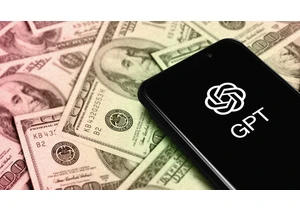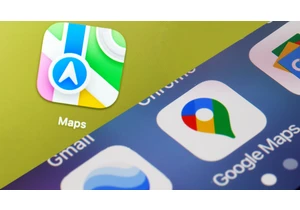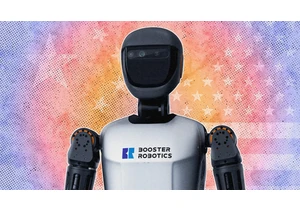As companies worldwide seek to stay competitive, many are turning to AI to improve their businesses. While AI-assisted programming has been a successful early use case, the rollout for non-developer teams has been slow, with businesses lacking a clear roadmap for sourcing, testing, and scaling AI tools. Too much time is being spent adding chat boxes and summaries without creating meaningful change for employees.
There’s a different path we can choose. I’m committed to bringing meaningful AI to every employee. We learned from the rollout of GitHub Copilot—both with our customers and our own teams—that AI can be an incredible tool to take away toil from our employees without changing their behaviors, giving them more time to be creative and collaborative. Already, we’re seeing non-developer teams get hours back each week for more meaningful work and it’s a repeatable process any company can use.
The right use case for AI
Being human is a skill that AI can’t put on its résumé. To maximize AI’s benefits, it’s important to focus on highlighting human attributes rather than replacing them.
A common misconception is expecting AI to take on humanity’s core attributes of creativity and empathy. Instead, we need to let computers do what they do best: Let AI handle repetitive tasks while employees have more time to focus on creative work.
Take our IT team. They receive over 5,000 employee inquiries every quarter. But their toil isn’t the volume of inquiries, it’s the time spent answering the same questions. They needed a solution that improved the inquiry experience, without changing the flow employees are accustomed to. In partnership with Moveworks, we built Octobot, a Slack-integrated tool trained on our unique policies and documentation. It can also be reactive, hopping in as a first line of support for an issue that pops up. It can be proactive, reaching out when an employee needs a new laptop and getting it shipped to their front door. And because it’s AI-powered, it can learn from every interaction.
Toil, when removed, adds back something more valuable. With our IT team, time back meant they could tackle bigger, more valuable problems . . . like how to roll out more AI tools to help employees.
Three guiding principles to select AI tools
Once you have a grasp of the toil you’re trying to solve, it’s time to start selecting tools to pilot. On top of security and ethical considerations, we have a few guiding principles we use to make sure we’re exploring the right AI tools:
- A tool should prioritize employee well-being and job satisfaction. With GitHub Copilot, we found that up to 75% of users feel more satisfied with their job.
- A tool should enhance experiences, not disrupt them. It’s imperative to keep the flow. We prioritize AI capabilities that can exist within the platforms and tools that employees are already using and have minimal enablement or training.
- A tool needs to provide a measurable, meaningful amount of time back. When evaluating an AI tool, the focus shouldn’t be on how many more tickets you can close, emails you can answer, or widgets you can create. It should be on how much time you gain back. Time is the only standard measurement across all problem spaces.
It’s important to also remember that the novelty of AI can also be distracting. We need to be open-minded and not let past experiences or future promises limit our expectations. Too often, I see people distracted by the idea of being able to chat with “anything,” or held back because they’re waiting for the next big breakthrough before diving in.
A plan you can repeat
To get AI in quickly and successfully, you need to make experimentation a core part of your culture. This isn’t the era of “move fast and break things,” but it’s also not the time to develop a six-month, one-size-fits-all rollout strategy.
It’s important to:
- Pilot often, early, in small groups. Right now we’re conducting pilots with more than 10% of employees, the majority on non-developer teams.
- Have a consistent North star metric. For us, that’s time back. The single metric allows us to understand how employees are feeling and provides opportunities for comparison across pilots (even if they’re solving for different types of toil).
- Keep open lines of communication. The majority of the pilots we’re conducting today are from employee recommendations. Throughout this process, be sure to collect qualitative feedback via touchpoints and surveys.
- Stop or adopt quickly. Our goal is to decide within 30 or 60 days. If value isn’t immediate, it’s not worth the onboarding investment.
Real results
Every team experiences toil in some way. And as AI shifts the economics of problem solving, it’s time to reconsider what problems are solvable, and what solving them means for your teams.
Today, Octobot addresses more than 30% of inquiries and our IT team is getting three hours back per person per week. But the bigger win is that customer satisfaction is at 98%, up 12% from before. Not only is our IT team happier with their day-to-day, but so are their customers (employees).
The next model of AI won’t save us, and that’s okay. By focusing on using the models, we have to achieve the value we need, enhancing existing processes, and keeping the value you’re receiving as a North star. Any team can unlock the true power of AI.
Kyle Daigle is COO of GitHub.
Connectez-vous pour ajouter un commentaire
Autres messages de ce groupe


The role of the CFO is evolving—and fast. In today’s volatile business environment, finance leaders are navigating everything from unpredictable tariffs to tightening regulations and rising geopol

In June, Google released its newest smartphone operating system, Android 16. The same month, Apple previewed its next smartphone oper


I’ve worked at the bleeding edge of robotics innovation in the United States for almost my entire professional life. Never before have I seen another country advance so quickly.
In


Restaurant industry leaders are excited for
